
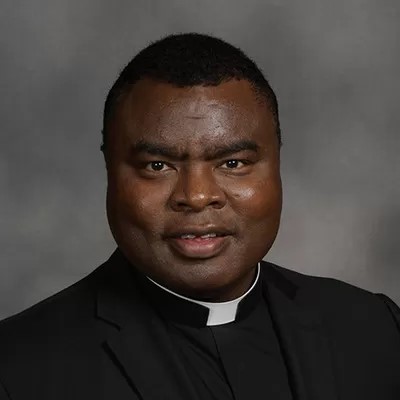
Parochial Administrator
Very Rev. Paul Ugo Arinze
To contact Rev. Paul Ugo Arinze, Pastor
call (608) 985-7558
Parochial Vicars


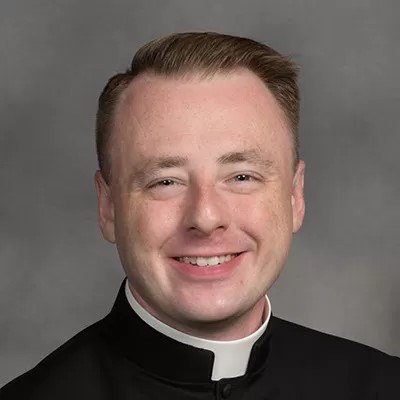
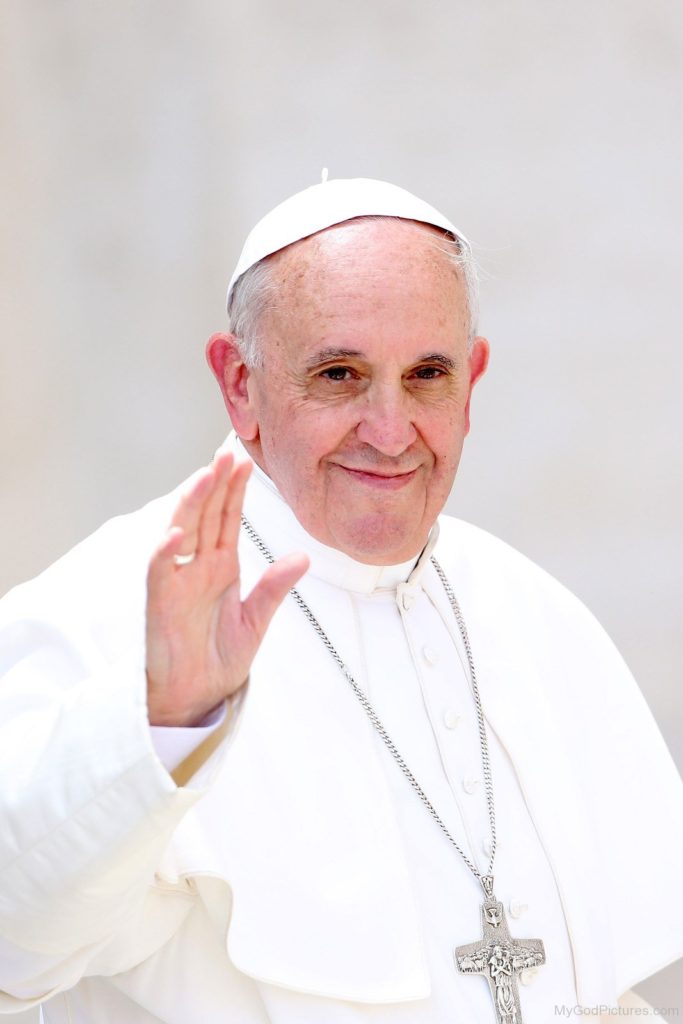
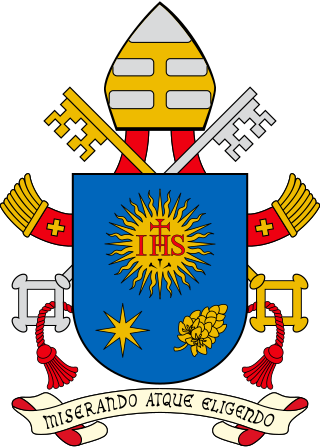
Pope Francis’ coat of arms and motto, explained
By Catherine Harmon
Today Pope Francis’ official coat of arms and papal motto were unveiled at a Vatican press conference. The coat of arms is almost identical to the one he used as Cardinal Jorge Mario Bergoglio of Buenos Aires, except the wide-brimmed cardinal’s hat at the top of the shield has been replaced by a miter, and the papal keys have been added.
From the Vatican Information Service, here are details about the symbols found on Francis’ coat of arms:
The shield has a bright blue background, at the centre top of which is a yellow radiant sun with the IHS christogram on it representing Jesus (it is also the Jesuit logo). The IHS monogram, as well as a cross that pierces the H, are in red with three black nails directly under them. Under that, to the left, is a star representing Mary, Mother of Christ and the Church. To the right of the star is a nard flower representing Joseph, Patron of the Universal Church. With these symbols the Pope demonstrates his love for the Holy Family.
Francis’ papal motto, displayed with the coat of arms, is also the same as the one he used as a bishop; it is “miserando atque eligendo,” which in Latin means “by having mercy, by choosing him.” It is taken from a homily of the Venerable Bede on the call of St. Matthew: “Jesus saw the tax collector and by having mercy chose him as an Apostle saying to him: Follow me.” Vatican Radio explains the significance of this passage to the Holy Father:
This homily, which focuses on divine mercy and is reproduced in the Liturgy of the Hours on the Feast of Saint Matthew, has taken on special significance in the Pope’s life and spiritual journey.
In fact it was on the Feast of Saint Matthew in 1953 that a young, seventeen-year-old Jorge Bergoglio was touched by the mercy of God and felt the call to religious life in the footsteps of Saint Ignatius of Loyola.
Episcopal—and papal—coats of arms have a long history in the Church, dating back to the Middle Ages. From the Vatican’s website:
There is an at least 800-year-old tradition for Popes to have their own personal coat of arms, in addition to the symbols proper to the Apostolic See. Particularly during the Renaissance and the centuries that followed, it was customary to mark with the arms of the reigning Supreme Pontiff all his principal works. Indeed, Papal coats of arms appear on buildings and in various publications, decrees and documents.
Popes often used their family shield or composed their own with symbols indicating their ideal of life or referring to past events or experiences, or even elements connected with specific Pontifical programmes. At times, they even added a variant to a shield that they had adopted on becoming a Bishop.
Harmon, C. (2013, March 18). Pope Francis’ coat of arms and motto, explained. Retrieved from The Catholic World Report: https://www.catholicworldreport.com/2013/03/18/pope-francis-coat-of-arms-and-motto-explained/
Downloaded 2019/06/14
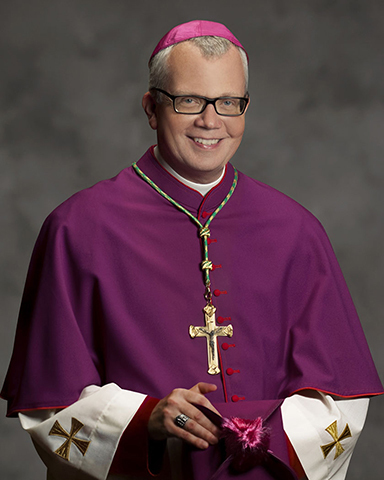
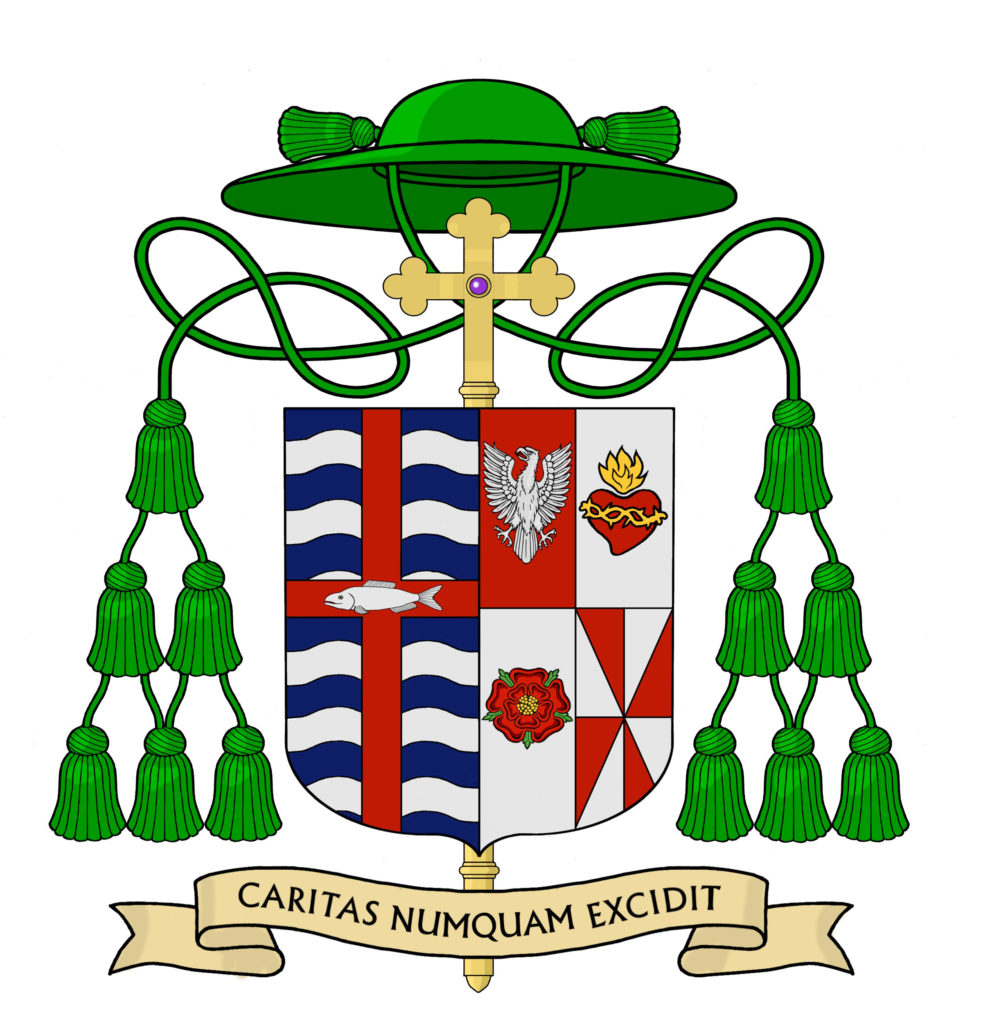
Most Rev. Bishop Donald J. Hying’s Coat of Arms Explained:
By heraldic tradition, the arms of the bishop of a diocese, called the “Ordinary,” are joined to the arms of his jurisdiction, seen in the dexter impalement (left side) of the shield. In this case, these are arms of the Diocese of Madison.
The arms of the diocese are composed of a field that is wavy bars of silver (white) and blue. This is the traditional heraldic representation for water which is divided by a red cross into four sections to remind us of the lakes of the region around Madison. On the red cross is a fish and this conjunction of symbols is a classic symbolic representation for Saint Raphael, the titular of the Cathedral Church of Madison. Raphael means “healer of God” and his ministrations to men make interesting reading in the Book of Tobit in the Old Testament. Parts of the fish were later used by Tobias to drive out the devil, who had slain seven of the previous husbands of Sara, his wife, while the gall was used to restore sight to his blind father.
Bishop Hying’s arms are drawn from four principle aspects and devotions of his life. In the first quarter on a red field is the displayed silver (white) eagle of St. John the Evangelist, patron of the Archdiocese of Milwaukee, and in quarter IV is the pattern heraldically called “gyronny,” that is the background of the arms of the Archdiocese of Milwaukee, where the bishop served during his priestly ministry. In the second quarter, on a silver (white) field is the Sacred Heart of Jesus, and in the third quarter, also on a silver (white) field, is a red rose, to honor both the Blessed Virgin Mary and St. Therese, “The Little Flower,” to whom the bishop has such deep devotion. For his motto, Bishop Hying has selected the Latin phrase “CARITAS NUMQUAM EXCIDIT.” This phrase, taken from St. Paul’s First Letter to the Corinthians (1 Cor 13:8) that expresses the profound Christian doctrine that in all that we do, we should do it with love, because “LOVE NEVER FAILS.”
The achievement is completed by the external ornamentation which are a gold
(yellow) processional cross, that is placed in back of the shield and which extends
above and below the shield, and the pontifical hat, called a “galero,” with its six tassels
in three rows on either side of the shield, all in green.
Updated 07-12-2019
